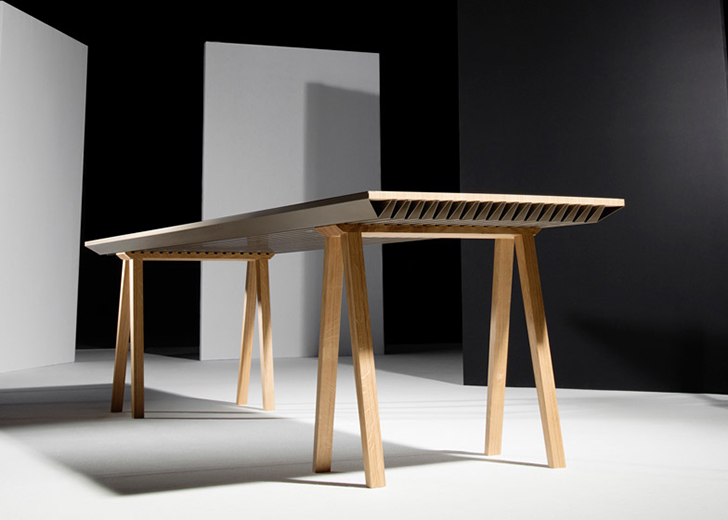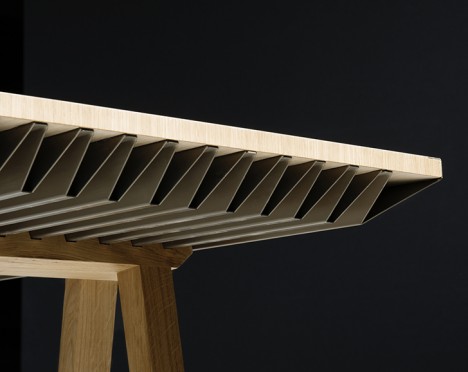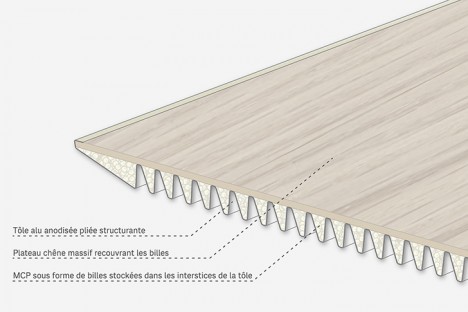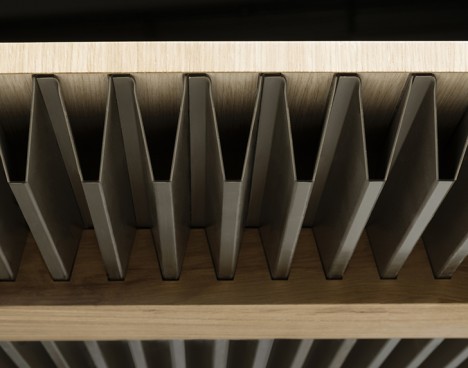Able to reduce cooling costs by up to 30% and heating expenses by as much as 60%, this series of temperature-regulating furnishings stores thermal energy without requiring an external power source, helping maintain room temperatures both during the day and at night.
Designed by Raphaël Ménard and Jean-Sébastien Lagrange, designs in this series such as the Climactic Table are composed of a combination of solid oak and corrugated aluminum with phase-change materials (PCM) sandwiched in between.
The wood contributes to desired thermal properties while the shaped aluminum provides structural support and conductivity. As a passive heating and cooling strategy, these objects can augment existing systems or replace them entirely in moderate climates.
A familiar phenomena in the realm of architecture, the idea of using materials to store and discharge heat or cold naturally is an old one. Stone, concrete or brick, for instance, are often placed to pick up warmth during the day then mitigate the temperature change at night, releasing that stored heat energy. While there is no specific control mechanism in play, such systems naturally create a level of equilibrium that reduces the next for external active (HVAC) systems.



